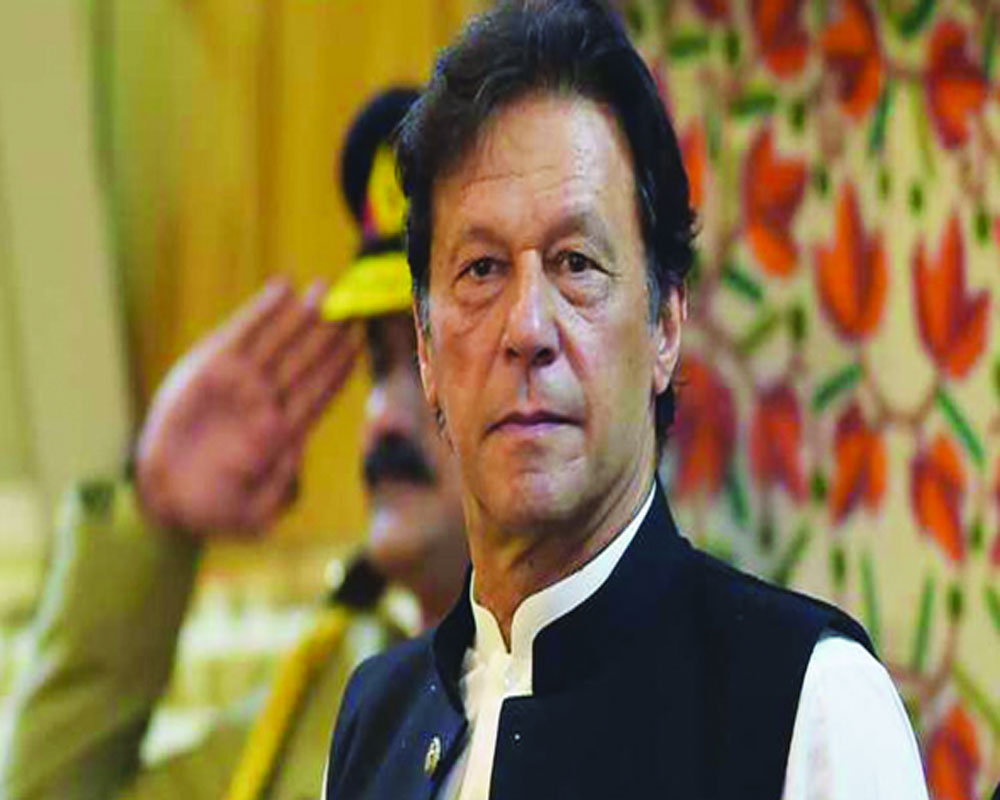
Now Pak in map war
by Opinion Express / 06 August 2020Imran Khan releases arbitrary map absorbing Kashmir, possibly at China’s behest. But there won’t be takers
Everybody knows that Pakistan never misses an opportunity to internationalise the Kashmir issue but the “cry wolf” screams make for such a tired and wasted diplomatic move that they don’t make news at all. Yet it could not have let the anniversary of the abrogation of Article 370 go past without making some noise. So it released a new map of Pakistan, incorporating Kashmir, parts of Ladakh and Junagadh in Gujarat in a naked display of its territorial ambitions and highly wishful thinking. India has rightly called the vacuous and unilateral declaration, that is not backed by any credible reasoning, support groups, historical reasoning or legal validity, as a “political absurdity.” Worse, the challenge to our globally accepted sovereignty came from none other than Pakistan Prime Minister Imran Khan, who cited the endorsement of his Cabinet, the Opposition and an unnamed Kashmiri leadership as the rationale for the new map. But it was what Pakistan’s Foreign Minister Shah Mehmood Qureshi said that shows this cartographic offensive to be a part of a larger pattern and not just Pakistan’s independent move. “The new map shows Kashmir shares a clear border with China,” he said, a clear indication that like Nepal, this attempt to redraw boundaries was made at China’s behest and underlines our eastern neighbour’s desire for strategic contiguity in the region than Pakistan’s any real concern for Kashmir. While India is firm on Chinese withdrawal from eastern Ladakh that seems to have driven a wedge in their greater plan to control the Karakoram by squeezing us with salami-slicing, Pakistan’s map claims are clearly intended to warn us of a two-front offensive. With the Chinese reluctant to pull back from claimed spurs and ridgelines in Ladakh, India is looking at a long haul of vigil and alertness this winter. China just wants to exhaust our capacities at the heights by opening up a second flashpoint. Just last month, Pakistan had moved almost 20,000 soldiers to the Line of Control (LoC) to match Chinese deployment on the Line of Actual Control (LAC). Strangely it hadn’t positioned such troops even after the Balakot air strikes. The simultaneous build-up along the border and Pakistan’s renewed push on infiltration are clearly intended to stretch our resources thin and wear us out so that both could manage some territorial grabs in the process. If recent reports are to be believed, then the Chinese are no longer shadow-boxing. Just like in Nepal, their officials have had a series of meetings with Pakistani ones on Gilgit-Baltistan. China is also encouraging Pakistan to revive the defunct terrorist network of Al-Badr that was once active in Kashmir. Debt-trapped by the China-Pakistan Economic Corridor (CPEC), with its economy in the doldrums and heavily dependent on borrowings and bailouts, Pakistan is but a pawn in China’s gameplan. The hyperbolic claims of Imran Khan are less spontaneous and more in alignment with the grandiloquent declarations of the Chinese dream.
Of course, Khan is also looking at extracting some home advantages with this move. He wants his constituents to know that he has not lost the leadership of the Kashmir cause although his repeated attempts to raise the change in its status at several international fora have not got any traction over the last year. At China’s insistence, the UN held a closed-door meeting on Article 370 last August but stopped short of censuring India and described Kashmir an internal issue within India’s constitutional space. At one time, he himself had conceded ground, saying he wasn’t being able to turn the tide of international opinion because India was a “large market.” So he needed to show he still means business. Second, by involving Turkey in its criticism of India, Khan wants to stake his claim to leadership of a neo-Islamic axis involving Pakistan, Turkey and Malaysia. This is evident from the Pakistan Government’s information campaign, encouraging both China and Turkey to issue anti-India statements and tweets. It is trying to get Kashmir under the banner of pan-Islamism. Most significantly, the US is now more an ally of India to humour it. So it is now left to Pakistan to devise its own exportable Kashmir strategy. This is one of the reasons why the Government must make efforts for a civil integration of Kashmir lest the perceived alienation becomes a fertile ground for Pakistan to implement a new separatist agenda. Already the Kashmiri youth, who have been more interactive with mainstream discourse because of pursuing higher education and jobs across the country, are sensing a conspiracy to keep them out with continued curfews and internet bans. There must be political engagement with people’s representatives as confinement is only making them martyrs before locals when they could be used as assets to push governance. The ground situation will be chaotic or negative but one has to work through it rather than risk Pakistan whipping up its agenda at our expense. If indeed the Government wants to publicise normalcy, then it should take a step forward, no matter what the risks. Or else the political economy of Kashmir could just drift away.
Courtesy: EDITORIAL-The Pioneer
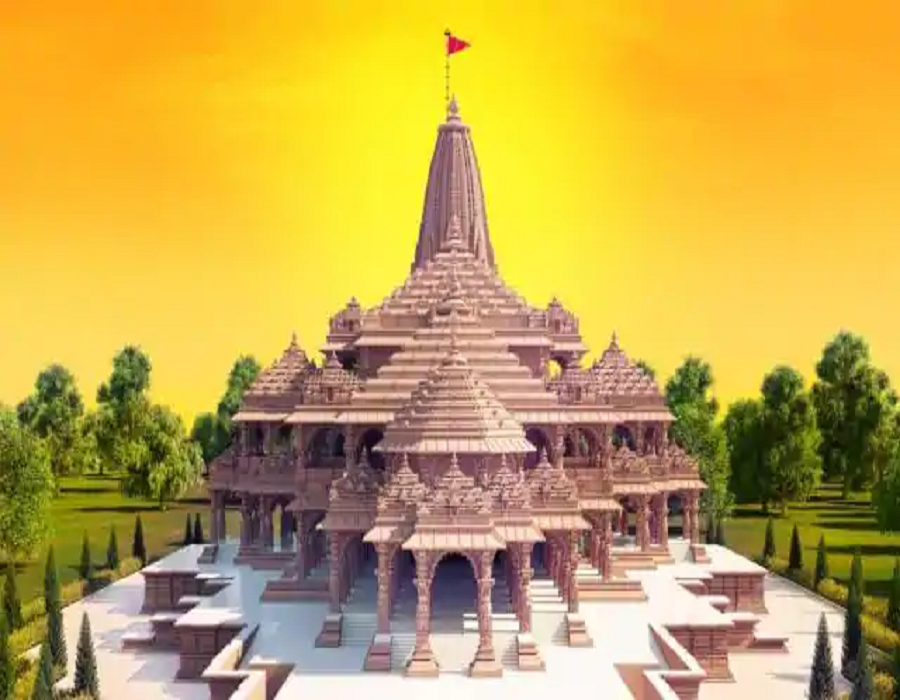
It is just not a temple
by Prashant Tewari / 01 August 2020On August 5, 2020, five hundred years of struggle for the reclamation of Janmabhoomi of the most revered historical figure and seventh incarnation of Bhagwan Vishnu have come to an end. The construction of the grand temple at Ayodhya must become a transformative event for Indian political discourse. It should be looked at as the central place of cultural identity for millions of Hindus as the Vatican is for Christians and Mecca is for Muslims. It should be the spiritual guiding place for the nation in the years to follow and subsequently, it should be delinked from politics. From now on, Indians must learn to treat religion as a personal affair of an individual and should never be brought up to score political points or gain electoral victories. The hate for each other was growing louder day by day on the issue of Ram Mandir. A common Hindu feeling was that why Muslims stayed here in India if they wanted a mosque when we had given them a Pakistan. And the Muslims always feel insecure because they got Pakistan, and Hindus think they are overstaying here. Both feelings were not there originally, but the appeasement politics brought them in.
The political landscape of India has been shaped by the tussle between two competing and mutually antagonistic grand ideas: composite nationalism and cultural nationalism. Initially, the dominant idea of Indian nationalism was the one the Congress championed. India’s composite culture, shaped by influences from different cultures over the centuries, was its leitmotif. The BJP, its predecessor Jana Sangh, and their parent the RSS rejected the idea of composite nationalism as a ploy by the post-Independence ruling elite to hide out of sight the impulses that had resulted in Partition. Indian nationalism, the Sangh argued, was a continuous stream flowing for thousands of years, based on the Hindu culture of South Asia. In this understanding, concepts such as composite culture appeared as an attempt to deny Hindu cultural nationalism its rightful place.
Lastly, it is a matter of great pride for the millions of Hindus worldwide that Ram Temple is emerging from the pale shadow of past slavery. For over 70 years the Ayodhya Mandir issue was a bone of contention for all parties versus the BJP. BJP was always accused of polarizing the Hindu in the name of Mandir, Article 370, and Common Civil Code etc. Now that the BJP is in power for a successive term led by a brilliant team of Narendra Modi and his man Friday Amit Shah, the controversial Article 370 has been abrogated. Ram Mandir is being reconstructed. The CAA has been enacted. The only issue pending as per its manifesto is the Uniform Civil Code. Narendra Modi made it perfectly acceptable to be ‘Hindu and Proud’ in mainstream political discourse. I am sure it is a non-issue for Lutyens Delhi elites but trust me; it will touch the heart of millions of Indians living in rural India for ages.
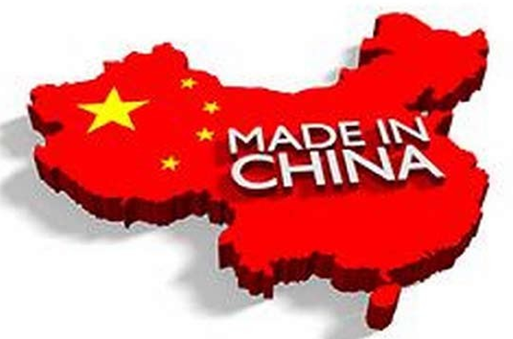
Superpower dogfight and the Indian Response
by Prashant Tewari / 11 July 2020The Goldman Sach report in 2007/8 predicted the Chinese economy will be almost the same size as the US economy by 2025, with the Indian economy the fourth largest after Japan. By 2050, they projected the largest economy in the world will be China, which will be almost twice the size of the US economy, with the Indian economy almost following the US economy at number two or at par with it. The new century dawned around two decades was forced to accept overwhelming American power, after the dismantling of the Soviet era. The overwhelming military superiority enjoyed by the United States and its economic might has established unipolar world order.
Military and political power rests on the economic strength of any country. American present superpower status is a product of its rapid economic growth between 1870 and 1950 and the fact that during the second half of the twentieth century it was the world’s largest and often most dynamic economy. Today, it enjoys 22% of the world’s total nominal GDP share with a population of less than 5% of the world’s population. However, the financial crisis of 2008 marked the end of American international domination and the emergence of China. The United States has lost considerable ground as a major manufacturer and as a large exporter of manufactured goods having steadily ceded that position to East Asia and especially China. Gradually, American domination in institutions like IMF, World Bank, WHO has declined significantly.
Although we are witnessing the Chinese rise as a growing superpower that is the bearer and driver of the new world, its tentacles have stretched across East Asia, Central Asia, South Asia, Latin America and Africa yet it is an authoritarian state with a dictator in command having an imperial ambition to expand its influence globally. President Xi Jinping is highly insecure within CCP. He is an aristocrat as well as a poor man’s poster boy in a confused Chinese system wherein officially it proclaims itself to be a communist state but de-facto it is a capitalist state. Xi has installed himself as the commander of the PLA, he has become President till eternity, he has wiped out dissenters from the country, he has purged several PLA commanders on the charges of corruption, and he has jailed potential rivals in the garb of the fight against corruption. His plan for global domination resulted in PRC pushing for trillion dollars ONE BELT ONE ROAD initiative to connect China with the rest of the world. Xi Jinping use PLA as a tool to frame his foreign policy. He has opened confrontation with all his neighbors namely Taiwan, Vietnam, Japan, South Korea, and India and his list includes bordering Russia and Kazakistan, he claims ownership over the south China sea that is fiercely disputed by Brunei, Vietnam, Philippines, Malaysia & Taiwan. Xi Jinping's lust for power is driving him crazy in the most difficult times that humanity has faced due to the Chinese-manufactured and exported coronavirus.
It is a serious reason to worry for 1.3 billion Indians. Already, we were facing an economic downtrend for the last three years, the GDP growth rate is gradually slipping towards the 5% mark and Covid 19 has destroyed a large section of the economy permanently. Xi Jinping has taken the Chinese virus as an opportunity to attack its neighbors to distract the world’s attention from the pandemic. Now it is India’s turn to return the gesture to China. This crisis offers a tremendous long-term strategic advantage for policymakers to deal with the Chinese threat permanently. India must immediately recognize Tibet and Taiwan as sovereign countries and allow them to run official embassies in India and vice versa, this will open the floodgate for several countries to follow in the footsteps of India in shaking up Chinese hegemony globally. Secondly, India must supply subsidized arms and military technology to Vietnam and Philippines to create multiple fronts for China and its PLA in response to what China is doing by arming Pakistan to be used for India in a proxy war. Thirdly, India should take a lead in Indo pacific command with the USA, Japan, and Australia to choke the Chinese trade route; it will hurt PRC and its ambition to be a global economic leader. Fourth, India must use weapons and army on a regular basis when it is spending billions of dollars on armed forces and weapon procurement. A country like Pakistan, Nepal and others must be fearful of the consequences if they plan to go against the interest of India. Lastly, restrict Chinese import of nonessential goods by imposing tariffs and focus our attention on building a formidable self-reliant economy with a target of $10 trillion by 2030 to face hostile China, this threat is permanent and China should be treated as a permanent adversary even when the times are good.
Editor-in-Chief Prashant Tewari: Connect at twitter / FB # prashanttewari11
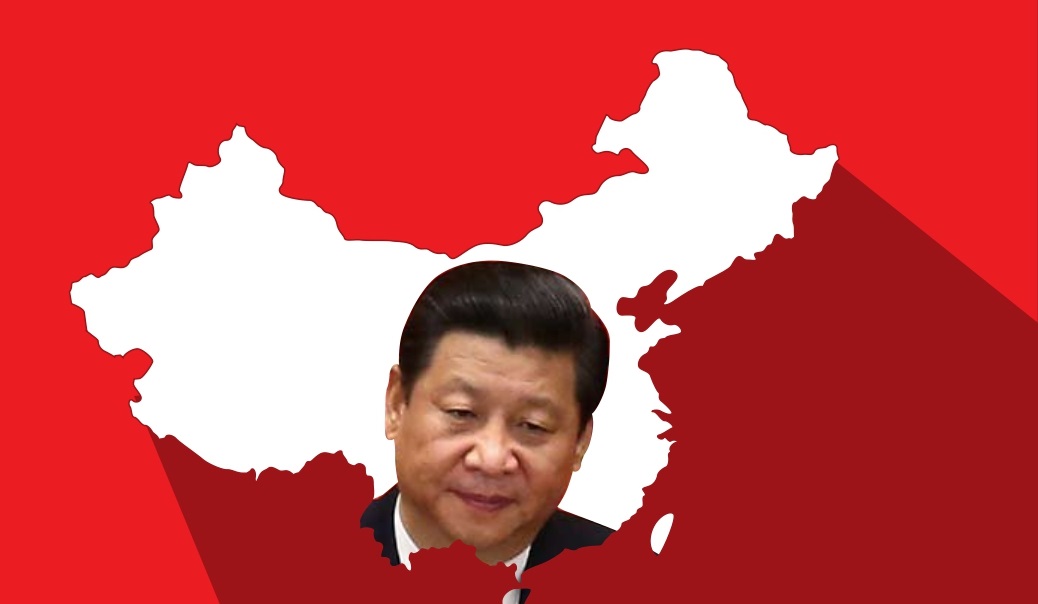
Globally cornered, China threatens neighbors to stay relevant
by Prashant Tewari / 16 June 2020Covid-19 has exposed Chinese design to capture the world through its sheer power of manufacturing and its control over the global supply chain. The world has realized that over-dependence on China will have a disastrous effect on the economies, and it is leading to empowering a totalitarian state that has no value system. The ruling CCP is threatening India, Vietnam, Taiwan, Hong Kong, Indonesia, and Japan and of course, Tibet is engulfed in a dragon basket. President Xi Jinping desire to make China a superpower has thrown the world into a strange paradox. China is on the verge of setting a cold war with the USA and the various countries have to decide the way they want to be a party to this ultimate divide. India is inching for closure to the USA in the last few decades and this is the reason why China has launched a military threat to mitigate this possibility.
On the military front, the three sectors where India and China have a recurrence of disputes are in Arunachal Pradesh, Sikkim and Ladakh. The Arunachal sector is largely dormant despite China’s claim to the entire State. The Sikkim sector is strategic as any Chinese road and infrastructure development in its proximity can threaten the narrow Siliguri Corridor which is the gateway from India to the seven States of North-East India. It is in the Ladakh sector that the geostrategic implications of the face-off and incursions assume significance. The Chinese have made an immense investment of $62 billion in the China-Pakistan Economic Corridor (CPEC) project. Recent assertions by India on its right to Gilgit-Baltistan through which the CPEC passes on its way to the Karakoram Pass in the Shaksgam valley (illegally conceded by Pakistan to China) have obviously rocked the boat. Unlike Doklam, where the Chinese movement was restricted to the single track that they were trying to develop along a narrow valley, in Ladakh the LAC is open and rugged. There are various “disputed areas” and “areas of differing perceptions” from the DBO in the north to Fukche in the south. Its centrality to the entire LAC in Ladakh and proximity to the Spanggur Gap and Chushul make the south bank of the lake a secure flank for large-scale moves by the Chinese. Hence, it holds operational importance to both armies. The western Ladakh region of DBO provides a buffer against Chinese direct access to Shaksgam valley and the Siachen heights. India therefore must hold on to DBO.
The Modi government's decision to broadcast weather reports of Gilgit-Baltistan on Indian news channels and the preconditions set for Foreign Direct Investment in segments of the Indian economy has definitely upped the ante for the Chinese. India is a huge market for Chinese manufactured goods and India hardly exports to China. China would hate to lose the large lucrative Indian market when the USA is pushing for tariffs and barriers for Chinese imports. India must put the trade upfront in the negotiations with the Chinese government rather than the military and diplomatic options, Chinese are smart business people to understand the cost of losing the Indian market. Finally, Narendra Modi must reshape the cabinet; the ministers lack global experience and political authority to drive a large country ahead. Narendra Modi has proved himself a decisive mass leader by winning two successive Lok Sabha elections, his deputy has proved himself an articulate political strategist and taskmaster in home ministry but the rest? Either they are not given space to work or they are incompetent. PM is not getting the required support from the cabinet to govern India effectively and the country is suffering. Recent events namely the Delhi riots, Shaheenbagh drama, Tablighi Jamaat show, Covid-19 crisis, and Chinese adventure have shown that team Modi-Shah is overburdened with work and they need extra competent hands to handle the crisis driver country.
Editor-in-Chief Prashant Tewari: Connect at twitter / FB # prashanttewari11 email:prashant.tewari@opinionexpress.in
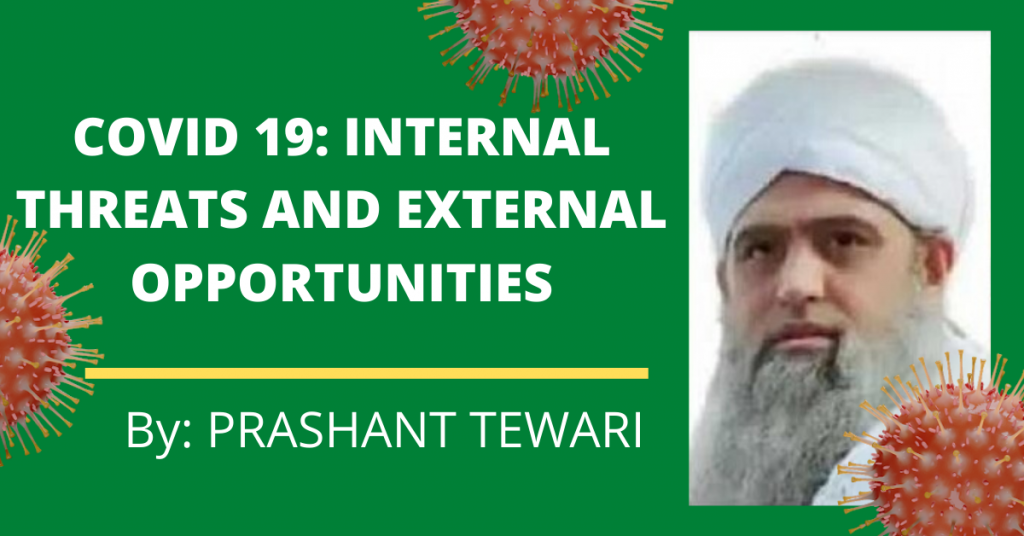
Covid 19: Internal threats and external opportunities
by Prashant Tewari / 13 May 2020Tablighi Jamaat and its leader Maulana Saad with his global masters had serious issues with CAA, NRC, Triple Talaq, Babri Masjid court verdict etc. in India and they unleashed frustration during the national crisis of COVID 19. The community is still hanging on to the political matters with a focus on discrediting the Narendra Modi government at any cost while the entire nation is combating the national health emergency. The country must take the threat of the Tablighis as an eye opener for future planning that must include the complete ban on Tablighi Jamaat in India, seizers of entire assets base of Tablighi Jamaat, identify ancillary units of Tablighi Jamaat so that they can be stopped in operating under different names, punish the traitors of COVID 19, immediately amend Article 25(1) so that the money and preachers from outside the country can be restricted in their operations ( it is a national security threat ), set up expert committee to re-examine provisions under Article 25-30 in the Indian constitution and give additional power to the police in IPC & CRPC to identity and book the anti-national culprits. It is important that Deoband, Barelvi, Salafi ideologies managing the network of mosques in India must be brought under government supervision and control as the temples of India are supervised under the Religious endowment Act 1873.
On the economic front, we have a battle royal ahead of us to capitalize on the flight of firms from China. Despite the doom and gloom scenario in the country right now due to the lockdown, the fact re- mains that the current Corona crisis has provided an opportunity, too, for India. But for the country to take advantage of this spell, it would require major initiatives and that too, at a fast pace. Covid-19 has provided the much-needed elbow room to the political leadership to push for transformation, more particularly land and labour reforms.
If Communist China can serve the economic interests of the capitalist West, then India is even better positioned to do that. The world order is expected to change and diplomacy will play a key role in establishing India as an alternative, low-cost manufacturing destination. For this to happen, first and foremost, Indian manufacturers must start thinking globally. In 2017, Deloitte research identified five countries, which it dubbed the MITI-V (Malaysia, India, Thailand, Indonesia, and Vietnam) as an alternative to China in which India was positioned at the top. We have our advantage in terms of a young population, cheap labour, domestic consumer market, rising income levels and so on, but this will remain in theory only till the time policy interventions grab the eyeballs of investors. Time holds a great value here and the government must take immediate proactive measures to avail once in a lifetime opportunity to make INDIA GREAT AGAIN.
Prashant Tewari – Writer is Editor of Opinion Express and regular columnist to The Pioneer. twitter@prashanttewari11
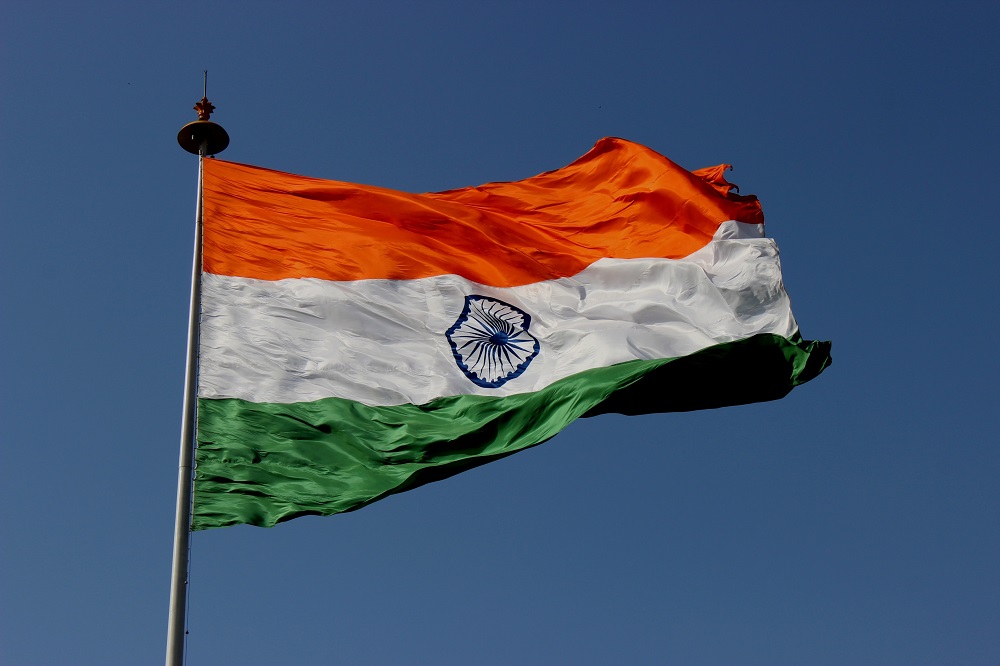
India’s super spreaders
by A Surya Prakash / 07 April 2020
At a time when the Union and State Governments and institutions are working with a single determination to contain COVID-19, the Tablighi Jammat has turned out to be a spoiler
The latest estimates of the Union Health Ministry indicate that over 35 percent of the COVID-19 cases that are springing up in the country have their origins in the conference organised by the Tablighi Jamaat, an Islamic evangelical movement, in New Delhi in the second half of March, which was in gross violation of State Government orders. At a time when the Union Government, State Governments and every national institution is working with single-minded determination and focus to contain the pandemic that has affected over a million patients globally and claimed over 50,000 lives, the Tablighi Jammat has turned out to be a spoiler.
Displaying gross irresponsibility by flouting the orders of the Delhi Government, the Jamaat held a conference of thousands of its members. The congregation continued even as devotees were barred entry in the most popular temples, including the Balaji Temple in Tirupati, the Siddhivinayak Temple in Mumbai, the Sai Baba temple in Shirdi, the Dargah of Khwaja Moinuddin Chishti in Ajmer and the Haji Ali Dargah in Mumbai. Lakhs of other temples, churches and religious places remained closed as per Government orders in their areas.
Also, it is said that probably for the first time after the birth of Christianity, churches around the world will be closed in the week leading up to Easter, which is regarded as the most spiritually enriching week for the faithful. Fr Filipe Neri Ferrao, the Archbishop of Goa, asked the clergy to use technology and Livestream church services. It quoted him as saying: “The faithful are dispensed from the obligation of participating in the mass on Sundays and holy days of obligation. In order to prevent community transmission of the virus, the faithful are advised not to go for daily mass, unless it is strictly necessary.”
If this is so with other faiths, why did the Tablighi Jamaat defy the Government’s orders? What do we do with these Muslim clerics, who lack basic civic sense, violate the law and even throw a challenge to the authorities? Also, this writer has seen several videos of Muslims violating the lockdown orders and social distancing norms and congregating in large numbers in masjids in different regions in the country in the initial days of the lockdown. This happened because these mullahs pooh-poohed social distancing and virtually laughed at the world that was groaning under the Corona epidemic.
It is now almost two weeks since the authorities suspended prayers in Mecca and Medina. Similarly, several important mosques in India have remained closed. The Kerala Governor, Arif Mohammad Khan, was the other day reciting verses from the Quran in which Allah tells the believers not to go to the mosque but to pray from home when the circumstances are not conducive.
Yet, none of this matters to some Muslim clerics in India, who are hell-bent on challenging the system time and again on the specious ground that Islam is under threat (Islam khatre mein hai). In fact, this was the theme of the address of the chief of the Tablighi Jamaat, Maulana Muhammad Saad, to his audience at the headquarters of the Jamaat. As per an audio clip of his “sermon” that is in circulation, he asked Muslims to ignore the orders for the closure of mosques because there was no better place to be than a mosque.
Second, this Coronavirus scare was a conspiracy to keep Muslims away from each other and to weaken Islam. They should, therefore, not fall prey to this propaganda. Finally, he declared that there was no better place to die than a mosque. This is absolutely horrendous. It shows that despite his long years of Indian citizenship, nothing in the Indian Constitution, the nation’s democratic and fraternal traditions has rubbed off on him. He seems so maladjusted to the nation’s secular, liberal traditions that he renders himself unworthy of the citizenship of such a great democracy.
Every word that he has uttered does violence to the core values in the Constitution and to the deep and abiding faith that all of us have in the principles laid down by our nation’s founding fathers.
It is indeed ironic that this maulana, who delivered this chilling advice to his audience and even said no one can escape from the wrath of Allah, has in recent days gone into hiding. It is so sad that all this bombast does not equip him to face the mundane authorities of the Delhi Government.
Meanwhile, JP Nadda, the president of the BJP, rightly exhorted his party colleagues to ensure that the sins of the Tablighi are not pinned on the entire Muslim community. He has advised them to ensure that this does not become a communal flash point. This is very important. We must sift the wheat from the chaff. It is also important that Muslim political leaders must speak up. Unlike the Hindus, who have hordes of objectors in their ranks against fundamentalists and fringe elements, Muslim politicians hesitate to call out those who threaten the nation’s secular fabric. They must change tack if they wish to preserve the Constitution that enables politicians of all hues to be elected to public office.
There are troublemakers like Maulana Saad and some other clerics. If we wish to preserve our Constitution and protect the health of 1,300 million citizens, such people must be dealt with in the most severe manner. Just when we thought we were getting to grips with COVID-19, the maulana and other leaders of the Tablighi triggered a monumental spread of the disease. The Government must send out a strong message that those who play around with the lives of millions of citizens, will be made to pay.
The Indian Penal Code (Sections 168-170) deals with persons, who commit nuisance and spread epidemic diseases, but the punishments under these sections are too mild. The Government must go beyond this. Several States, including Delhi, have already invoked the powers vested in them under the Epidemic Diseases Act, 1897.
The Delhi Government’s regulations required foreigners and persons with a travel history to self-quarantine. On March 13, it prohibited the assembly or 200 or more people. The Chief Minister, Arvind Kejriwal, slashed this to 20 on March 19. Each of these orders and regulations has been violated by the Nizamuddin gathering.
But the punishments prescribed in these Acts and even in the National Security Act (NSA) are too inadequate for this dastardly and unpardonable sin. Those who violated the curfew, behaved irresponsibly, contracted the disease and spread it to others are in one category. But those who are involved in the diabolical act of deliberately spreading this disease should be classified as mass murderers. What should be the punishment for endangering the lives of millions of people and ensuring the death of hundreds of them? The Indian State needs to ponder over this.
(Writer: A Surya Prakash; Courtesy: The Pioneer)
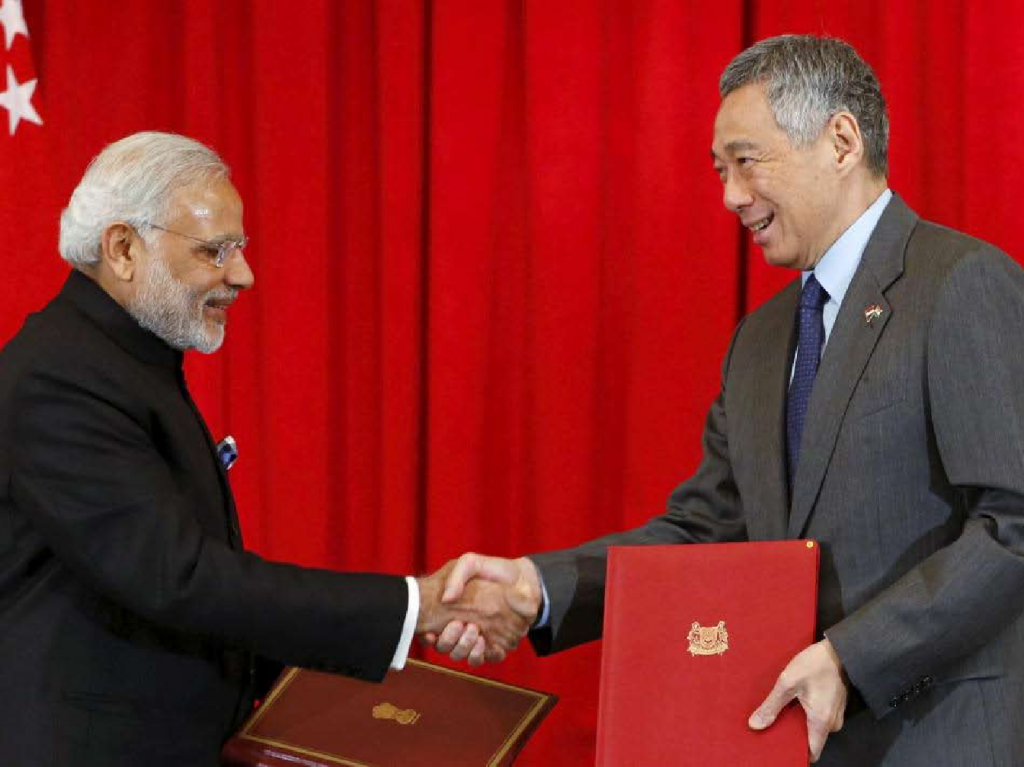
Of Shared Values, Common Destiny
by Opinion Express / 01 April 2020The historic visit of 10 heads of ASEAN countries as guests of honour has opened new vistas in international relations
On 26TH January, 1.25 billion Indians had the honour to host 10 esteemed guests — leaders of ASEAN nations — at India’s republic Day celebrations in New Delhi. on Thursday, I had the privilege to host the ASEAN leaders for the Commemorative Summit to mark 25 years of ASEAN-India Partnership. Their presence with us is an unprecedented gesture of goodwill from ASEAN nations. responding to this, on a winter morning, India has come out to greet them in a warm embrace of friendship. This is no ordinary event. It is a historic milestone in a remarkable journey that has brought India and ASEAN in a deepening partnership of great promise for their 1.9 billion people, about one-fourth of human kind. The India-ASEAN partnership may be just 25 years old. But, India’s ties with Southeast Asia stretch back more than two millennia. Forged in peace and friendship, religion and culture, art and commerce, language and literature, these enduring links are now present in every facet of the magnificent diversity of India and Southeast Asia, providing a unique envelope of comfort and familiarity between our people.
“More than two decades ago, India opened itself to the world with tectonic changes. And, with instincts honed over centuries, it turned naturally to the East. Thus, began a new journey of India’s reintegration with the East”
More than two decades ago, India opened itself to the world with tectonic changes. And, with instincts honed over centuries, it turned naturally to the East. Thus, began a new journey of India’s reintegration with the East. For India, most of our major partners and markets — from ASEAN and East Asia to North America — lie to the East. And, Southeast Asia and ASEAN, our neighbors by land and sea, have been the springboard of our Look East and, for the last three years, the Act East Policy.
Along the way, from dialogue partners, ASEAN and India have become strategic partners. We advance our broad-based partnership through 30 mechanisms. With each ASEAN member, we have growing diplomatic, economic and security partnership. We work together to keep our seas safe and se- cure. Our trade and investment flows have multiplied several times. ASEAN is India’s fourth largest trading partner; India is ASEAN’s seventh. Over 20 per cent of India’s outbound in- vestments go to ASEAN. Led by Singapore, ASEAN is India’s leading source of investments. India’s free trade agreements in the region are its oldest and among the most ambitious anywhere.
Air links have expanded rapidly and we are extending highways deep into continental Southeast Asia with new urgency and priority. Growing connectivity has reinforced proximity. It has also put India among the fastest growing sources of tourism in Southeast Asia. Over a 6 million strong Indian diaspora in the region — rooted in diversity and steeped in dynamism — constitutes an extraordinary human bond be- tween us.
Thailand

Thailand has emerged as an important trading partner of India in ASEAN and is also one of the important investors in India from ASEAN. Bilateral trade between India and Thailand has more than double over the last decade. relations between India and Thailand are extensively spread across many areas. We are important regional partners linking South and Southeast Asia. We cooperate closely in the ASEAN, East Asia Summit and Bimstec (the Bay of Bengal Initiative for Multi-Sectoral Technical and Economic Cooperation), as also in the frameworks of Mekong Ganga Cooperation, Asia Cooperation Dialogue and Indian ocean rim Association. Thailand Prime Minister’s state visit to India in 2016 has made a long-lasting impact on bilateral relations.
The whole of India mourned with their Thai brothers and sisters the demise of the great and popular King Bhumibol Adulyadej. The people of India also join the friendly people of Thailand in praying for the long, prosperous and peaceful reign of the new king, His Majesty King Maha Vajiralongkorn Bodindradebayavarangkun.
Vietnam
The traditionally close and cordial relations have their historical roots in the common struggle for liberation from foreign rule and the national struggle for independence. Leaders like Mahatma Gandhi and President Ho Chi Minh led our peoples in the heroic struggle against colonialism. During the visit of Prime Minister Nguyen Xuan Phuc to India in 2007, we signed the strategic partnership agreement. This strategic partnership has grown into a Comprehensive Strategic Partnership with my visit to Vietnam in 2016.

India’s relations with Vietnam are marked by growing economic and commercial engagement. Bilateral trade be- tween India and Vietnam has increased about 10 fold in 10 years. Defence cooperation has emerged as a significant pillar of strategic partnership between India and vietnam. Science and technology is another important area of cooperation be- tween India and vietnam.
Myanmar
India and Myanmar share a land-border of over 1,600 kms as well as a maritime boundary. religious and cultural traditions flowing from our deep sense of kinship and our common Buddhist heritage bind us as closely as does our shared historical past. Nothing illuminates it more gloriously than the gleaming tower of Shwedagon Pagoda. The cooperation to restore Ananda Temple in Bagan with assistance of the Archaeological Survey of India also is emblematic of this shared heritage

During the colonial period, political bonds were forged between our leaders, who displayed a great sense of hope and unity during our common struggle for independence. Gandhi ji visited Yangon several times. Bal Gangadhar Tilak was deported to Yangon for many years. The clarion call of Netaji Subhash Chandra Bose for India’s Independence stirred the souls of many in Myanmar.
Our trade has more than doubled over the last decade. our investment ties are also robust. Development cooperation has a significant role in India’s relations with Myanmar. This assistance portfolio is presently worth over $1.73 billion. India’s transparent development cooperation is in line with Myanmar’s national priorities and also builds synergy with the Master Plan of ASEAN Connectivity.
Singapore
Singapore is a window to the heritage of India’s ties to the region, the progress of the present and the potential of the future. Singapore was a bridge between India and Asean. Today, it is our gateway to the East, our leading economic partner and a major global strategic partner, which resonates in our membership in several regional and global forums.

Singapore and India share a strategic partnership. our political relations are infused with goodwill, warmth and trust. our Defence ties are among the strongest for both. our economic partnership covers every area of priority for our two nations. Singapore is India’s leading destination and source of investments. Thousands of Indian companies are registered in Singapore.
Sixteen Indian cities have over 240 direct flights every week to Singapore. Indians make up the third-largest group of tourists in Singapore. Singapore’s inspirational multiculturalism and respect for talent have nurtured a vibrant and dynamic Indian community that is contributing to deeper co-operation between our nations.
Malaysia
The contemporary relations between India and Malaysia are quite extensive and spread across many areas. Malaysia and India share strategic partnership and we cooperate in a number of multilateral and regional fora. Malaysian Prime Minister’s state visit to India in 2017 has made a long-lasting impact on the bilateral relations.

Malaysia has emerged as the third largest trading partner of India in ASEAN and is one of the important investors in India from ASEAN. Bilateral trade between India and Malaysia has increased more than two-fold in 10 years.
India and Malaysia have a bilateral Comprehensive Economic Cooperation Agreement since 2011. This Agreement is unique in the sense that both sides have offered ASEAN Plus commitments in trade in goods and have exchanged WTO Plus offers in trade in services. The Revised Double Taxation Avoidance Agreement between the two countries, signed in May 2012, and the MOU on Customs Cooperation, signed in 2013 further facilitate our trade and investment cooperation.
Philippines
I had a very satisfying visit to the Philippines a little over two months ago. In addition to attending the ASEAN-India, EAS and related Summits, I had the pleasure of meeting President Duterte and we had extensive discussions on how to carry forward our warm and problem-free relationship. We are both strong in services and our growth rates are amongst the highest among major countries. our business and trade potential holds great promise.

I laud President Duterte’s commitment to bringing about inclusive development and to fighting corruption. These are areas where both countries can work together. We are happy to share our experience with the Philippines in universal ID cards, financial inclusion, making banking accessible to all, facilitating direct transfer of benefits, and in promoting cash- less transactions. Making affordable medicines available to all is another priority area for the government of the Philip- pines that we are ready to contribute to. From Mumbai to Marawi, terrorism knows no boundaries. We are enhancing our cooperation with the Philippines in facing this common challenge.
Brunei

Bilateral trade between India and Brunei has more than doubled over the last decade. India and Brunei share common membership of UN, NAM, Commonwealth, ARF, etc., and as developing countries with strong traditional and cultural ties, Brunei and India enjoy a fair degree of commonality in their perceptions on major international issues.
The visit of the Sultan of Brunei to India in May 2008 was a landmark in India-Brunei relations. vice-President of India visited Brunei in February 2016.
Lao PDR

Relations between India and Lao PDR are extensively spread across many areas. India has been actively involved in power transmission and agricultural sectors in Lao PDR. Today, India and Lao PDR cooperate in a number of multilateral and regional fora.
While the trade between India and Lao PDR is still below potential, India has extended Duty Free Tariff Preference Schemes to Lao PDR, encourage exports of goods from Lao PDR to India. We also have immense opportunities in services trade that goes in building the economy of Lao PDR. Implementation of the ASEAN-India Services and Investment Agreement would help facilitate our services trade.
Indonesia
Separated by a mere 90 nautical miles in the Indian ocean, India and Indonesia share a continuity of civilizational relationship that spans over two millennia. Whether it is the annual Balijatra celebrated in odisha or the legends of ramayana and Mahabharata, which are visible across the entire landscape of Indonesia, these unique cultural threads umbilically bind the peoples of Asia’s two largest democracies in a special neighbourly embrace.

“Unity in diversity” or Bhinneka Tung-gal Ika is also a key facet of the shared societal value structures that both countries celebrate, as also the common values of democracy and rule of law. Today, as strategic partners, our cooperation spans across the entire gamut of political, economic, Defence & security, cultural and people-to-people fields. Indonesia continues to be our largest trading partner in ASEAN. Bilateral trade between India and Indonesia increased 2.5 times in the last ten years. President Joko Widodo’s State visit to India in 2016 has made a long- lasting impact on the bilateral relations.
Cambodia
The traditional and friendly relations between India and Cambodia are deeply rooted in civilizational ties. The magnificent structure of Angkor Wat temple is a glorious testimony and grand symbol of our ancient historical, religious and cultural links. India was proud to undertake restoration and preservation of Angkor Wat temple during the difficult period from 1986-1993.
India continues this valuable association in the ongoing restoration of TaProhm temple. After the collapse of Khmer rouge regime, India was the first country to recognize the new Government in 1981. India was also associated with the Paris Peace Accord and its finalisation in 1991. These traditional bonds of friendship have strengthened through regular exchange of high-level visits. We have expanded our cooperation in diverse fields such as institutional capacity building, human resource development, developmental and social projects, cultural exchanges, Defence cooperation, tourism and people-to- people contact.

In the ASEAN context, and on various global platforms, Cambodia is an important interlocutor and a supportive partner for India. India is committed to remain a partner in Cambodia’s eco- nomic development and looks forward to further deepen its traditional ties.
And, India and ASEAN are doing much more. our partnership in ASEAN- led institutions like East Asia Summit, ADMM+ (the ASEAN Defence Ministerial Meeting Plus) and ARF (the ASEAN regional Forum) are advancing peace and stability in our region. India is also an eager participant in the regional Comprehensive Economic Partnership Agreement, seeking a comprehensive, balanced and fair agreement for all 16 participants.
The strength and resilience of partnerships come not just from arithmetic of numbers, but also from the underpinnings of the relationship. India and ASEAN nations have relations free from contests and claims. We have a common vision for the future, built on commitment to inclusion and integration, belief in sovereign equality of all nations irrespective of size, and support for free and open pathways of commerce and engagement.
The ASEAN-India partnership will continue to grow. With the gift of demography, dynamism and demand — and with rapidly maturing economies
— India and ASEAN will build a strong economic partnership. Connectivity will increase and trade will expand. In an era of cooperative and competitive federal- ism in India, our states are also building productive cooperation with Southeast Asian nations. India’s Northeast is on a resurgent path. Links with Southeast Asia will accelerate its progress. In turn, a connected Northeast will be a bridge to ASEAN-India ties of our dreams. As Prime Minister, I have attended four annual ASEAN-India Summits and East Asia Summit. These have reinforced my conviction in ASEAN unity, centrality and leadership in shaping the region in this vision.
This is a year of milestones. India turned 70 last year. ASEAN reached the golden milestone of 50 years. We can each look to our future with optimism and to our partnership with confidence.
At 70, India exudes the spirit, enterprise and energy of its young population. As the fastest growing major economy in the world, India has become the new frontier of global opportunities and an anchor of stability of the global economy. With every passing day, it is easier and smoother to do business in India. I hope that ASEAN nations, as our neigh- bours and friends, will be an integral part of New India’s transformation.
We admire ASEAN’s own progress. Born when Southeast Asia was a theatre of a brutal war and a region of uncertain nations, ASEAN has united 10 countries behind a common purpose and a shared future. We have the potential to pursue higher ambitions and address the challenges of our times: from infrastructure and urbanization to resilient agriculture and a healthy planet. We can also use the power of digital technology, innovation and connectivity to transform lives at unprecedented speed and scale.
A future of hope needs a solid bed- rock of peace. This is an age of change, disruptions and shifts that comes only rarely in history. ASEAN and India have immense opportunities — indeed, enormous responsibility — to chart a steady course through the uncertainty and turbulence of our times to a stable and peaceful future for our region and the world.
Indians have always looked East to see the nurturing sunrise and the light of opportunities. Now, as before, the East, or the Indo-Pacific Region, will be indispensable to India’s future and our common destiny. The ASEAN-India partnership will play a defining role in both. And, in Delhi, ASEAN and India renewed their pledge for the journey ahead.
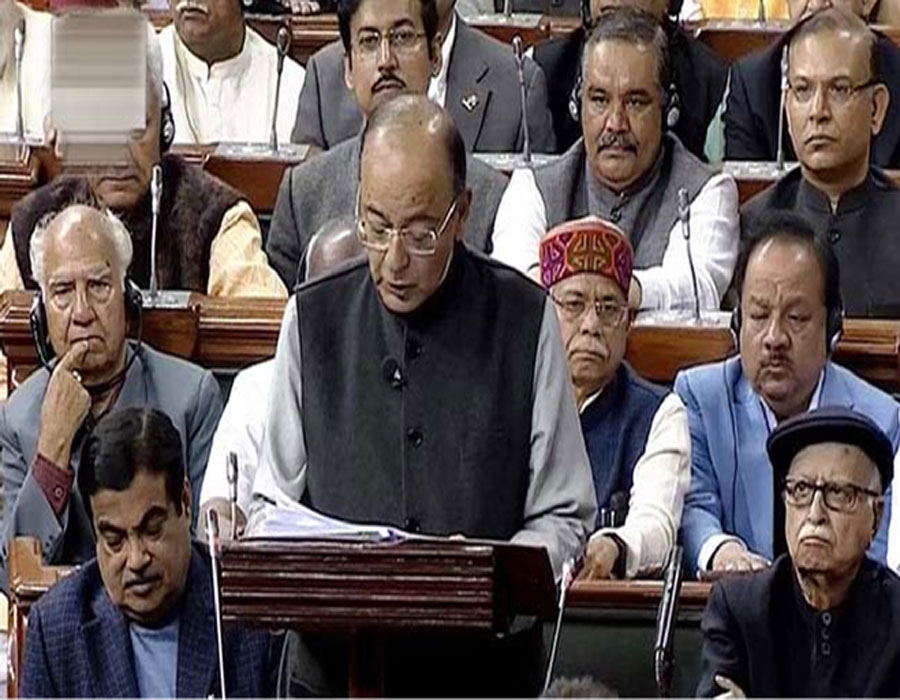
Govt banks big time on Modicare
by Prashant Tewari / 30 March 2020‘No reimbursement scheme, it will be cashless’
Finance minister Arun Jaitley said that the world’s biggest health cover plan announced in the Union Budget will be cashless and not a reimbursement scheme, and promised more funds if required depending on the rollout later next financial year.
The National Health Protection Scheme (NHPS) touted as ModiCare envisaged to provide medical cover of up to Rs 5 lakh to over 10 crore poor and vulnerable families, constituting 40% of the population.
“It takes care of hospitalization, the secondary and tertiary care. obviously, it will involve various state hospitals and selected private hospitals. It can be on trust model; it can be on insurance model. It’s not on reimbursement mod- el because too many complaints come on the reimbursement model,” he said.
The model is now being worked out between the NITI Aayog and the health ministry, he said, adding that the date of implementation would be next financial year and sometime in the course of the year it will be worked out.
If assuming the model to be insurance led, the premium shrink with the increase in number of policy holders, he said at an event organized by a magazine. The scheme although appreciated by experts also raises apprehension about its implementation and the initial corpus of just Rs 2,000 crore.
Assuring that the scheme will be entirely state funded, Jaitley said initial funds of Rs 2,000 crore has been allocated and whatever funds required, as the scheme rolls over, would be made available.
“In the coming year, I see more comfortable situation as far as revenues are concerned because the graphs as far as direct tax is concerned would move very fast,” he said.
Following demonetisation and implementation of Goods and Services Tax, the number of direct tax assesses have gone up … once anti-evasion measures, I do expect a little bump up in the GST collection also. I don’t see revenue going to be a major challenge in that,” he said.
Jaitley in the Budget speech said, “We are all aware that lakhs of families in our country have to borrow or sell assets to receive indoor treatment in hospitals. Government is seriously concerned about such impoverishment of poor and vulnerable families. Present RSBY provide annual coverage of only Rs 30,000 to poor families.”
Several state governments have also implemented supplemented health protection schemes providing varying coverage, he had said in the Lok Sabha.
The finance minister also advocated that the central and the state government can pool in resources for health care to achieve efficiency.
He also emphasized on having better hospitals in rural areas even though Tier I and Tier II cities have good hospitals.
Setting up of hospitals in various districts is the state subject under the federal structure, he added.
Prashant Tewari – Writer is Editor of Opinion Express and regular columnist to The Pioneer.
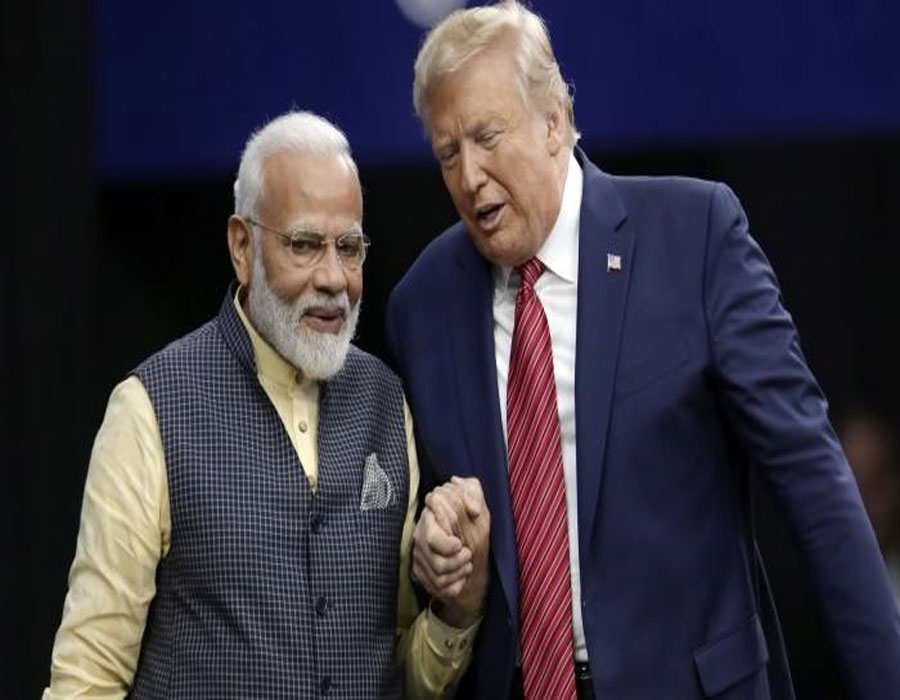
Trump - Modi: Salesmen
by Prashant Tewari / 01 March 2020There may not be too many big takeaways from the visit of US President Donald Trump to India as the trajectory of Indo-US relations has been only going up despite regime changes with respective heads of State striking up some sort of optical chemistry. The civil nuclear deal began a new season of engagement, one that has helped each fill-up the other’s strategic requirement. For the US, there’s our sizeable market and value as a bulwark against a hegemonic China in the region. For India, that has meant de-hyphenation from Pakistan and the US’ own narrowed down zoom of our neighbour’s relevance in the strategic backyard of Afghanistan, humouring it within that context. It has also meant US endorsement of the changed status of Kashmir. So, this visit would have yielded as much had Trump or Modi not pushed Yeh Dosti visuals. The continuity of the Indo-US relations is no more in doubt. The greatest takeaways are, therefore, for the two men who are bound by a similar personality, politics and ideology, of justifying even autocracy and divisive excesses as putting their nations first. To that extent, Trump has wisely chosen India to build up momentum for his campaign at home, besmirched by the impeachment move. He has simply used India’s demographics and population to prove a US President has magnified his global popularity.
Hence the preoccupation with the scale of events and spectacles. Considering that he has yet to broker a worthwhile truce despite his global ambitions to be seen as a peacemaker or a big enough economic pact that justifies his protectionist policies, the big defence deals with India will give him a talking point about generating jobs back home. Apart from the billions that Indian companies will be investing in the US energy market. For Modi, the ceremonial genuflection is intended for the same reason, to prove that his leadership has the endorsement of none other than the US President and that for all the opposition by both political parties and civil society at home, he has the US-sanctioned trust and a broader silence on Kashmir, no matter the pyrrhic bursts of angst. Yes, there’s a subtext in the larger hyperboles of stronger ties and comradeship, like the mention of India’s diversity as a democracy and Pakistan’s efforts at curbing terrorism, albeit at US insistence. Also, Trump renewed his willingness to mediate between India and Pakistan on Kashmir, leaving it up to Modi to decide. He even mentioned religious freedoms, saying a lookback would prove that India had worked hard for religious freedom and that Modi wasn’t against it. That was a not so subtle hint about the historical timeline and the changed contemporary situation. And while he announced that India was all for Afghan peace, the Government would be anxious about the Taliban’s role in the new regime, one that would be controlled by Pakistan and one it would use to extract some concessions from the US that is dependent on it. The US has definitely softened towards our neighbour of late. And in insisting that the 5G network be used in a transparent and accountable manner and not as a conduit of censorship, there was a hidden message for India, too, though the target implied was China. Clearly, Trump doesn’t forget to remind us of our weaknesses and his coercive strengths. There was a gentle heave, not a hard push though.
The economic partnership is a work in progress, and India won’t be as servile as the US expects it to be. Trump has been punishing on that front, taking us out from the Generalized System of Preferences List, saying India is no longer a “developing” country. The tit-for-tat tariff war continues and although we have cut import duties on the Harley Davidson by about 50 per cent, Trump reiterated it again.
(The writer is Prashant Tewari, Editor-In-Chief of The Opinion Express Group)
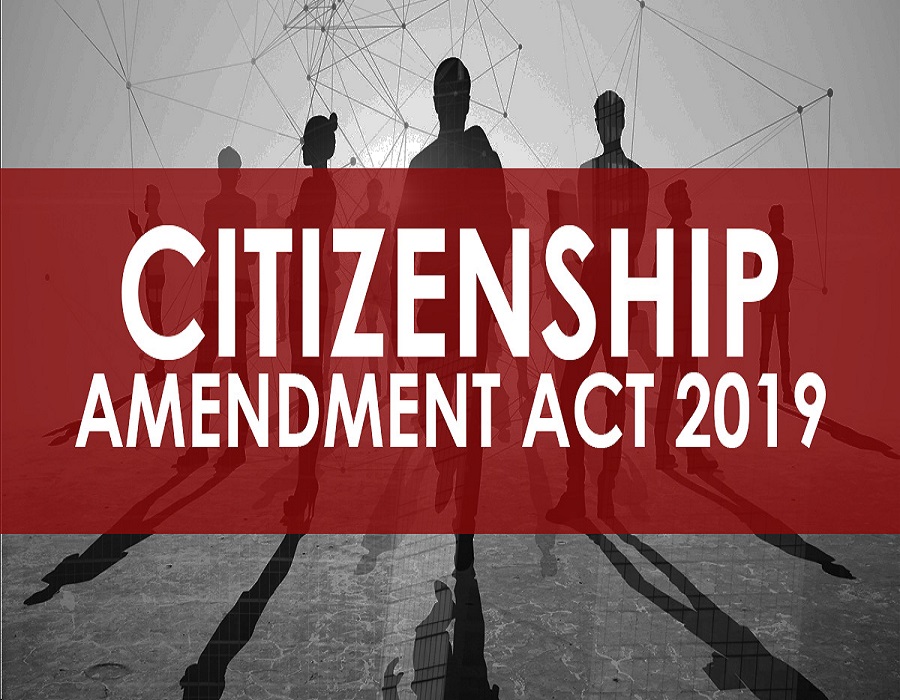
Modi government should have planned CAA at better time
by Prashant Tewari, Editor-in-Chief / 01 February 2020The nationwide conflict over the Citizenship Amendment Act (CAA) could not have come at a worse time as economic activities are at a minimal; industrial production is at its lowest; consumption is hit; purchasing power is ebbing and the prices of commodities are skyrocketing. Food inflation jumped to a 71-month high in November, adding to the people’s woes. Now these countrywide protests and violence against the Citizenship Amendment Act (CAA), leading to disruptions in traffic, transportation, internet and telecom services, are resulting in more losses and delays in production, which are not easy to assess. However, industry leaders maintain a studied silence over such issues lest they be tagged as political activists.
The Government should have launched a move to educate people on the CAA through public discussion, debate and attempt a national consensus. It also might have chosen a better time to bring the CAA so that the last fiscal quarter did not become victim of the public outcry that it should have anticipated in the first place. Now the fiscal health of the country has become a victim of the violence that has gripped the nation for days together. This announcement has sparked off yet another political battle between the Centre and the State, worsening the already tenuous relationship between the two. Many States and even a half-ally of the BJP, the BJD supremo and Odisha Chief Minister Naveen Patnaik, who supported the CAA earlier, is opposing the NRC now.
The CAA agitation has added to the woes of the Government also as it has come at a time when preparations for Budget presentation have begun and States are demanding their piece of the Goods and Services Tax (GST) pie. The States in their interactions with Finance Minister Nirmala Sitharaman are complaining that delay in release of their share of the GST is causing immense problems for them and affecting their financial and economic activities. For a better future, they are also seeking an increase in their fiscal deficit limits.
CAA is vital for national security because India is having porous borders with several countries, it may lead to huge influx of undesired people leading to further pressure on ever-increasing population. Secondly, the distribution of subsidies for the native poor people is stressed and Indian national’s needs are compromised. The Centre needs to call all stakeholders to the negotiating table to help boost the economy.
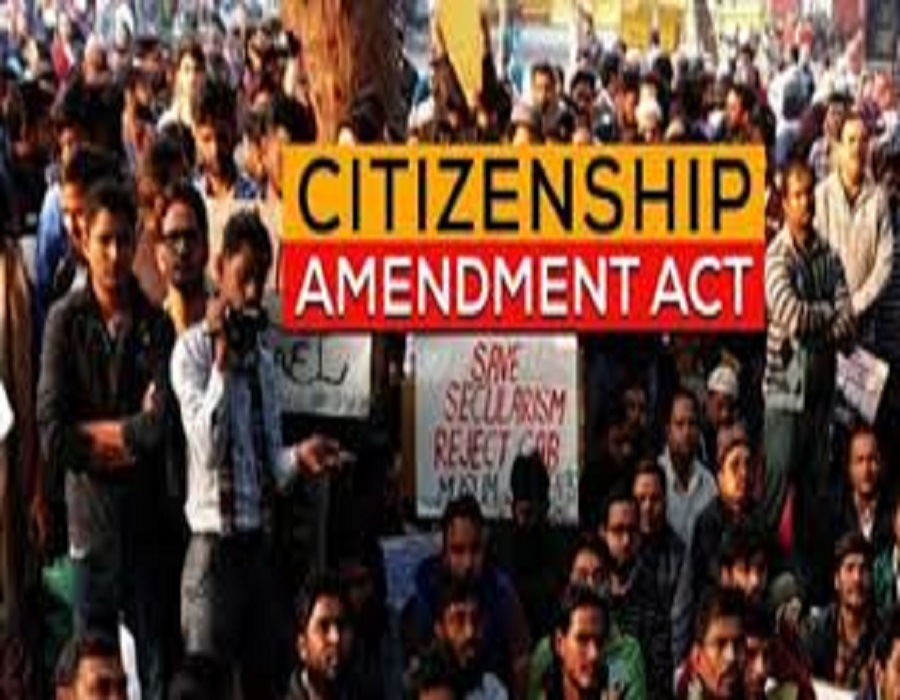
CAA CAB: NEED OF THE HOUR
by Prashant Tewari / 01 January 2020The Indian idea of citizenship – as embodied in the Constitution and the law – is in the throes of a profound and radical metamorphosis. The twin instruments of this transformation are the National Regis-ter of Citizens and the Citizenship Amendment Act. If the former is calv-ing out paths to statelessness for disfavoured groups, the latter is creating paths to citizenship for preferred groups. While the first is, despite the looming threat of its extension across In-dia, presently limited to the state of Assam, the second is designed to be pan-Indian in its application.
The implications of these developments can be in-terpreted in multiple ways. From a legal perspective, they imply a foundational shift in the conception of the Indian citizen embodied in the Constitution of In-dia, followed by the Citizenship Act, 1955• This is, first, a move from soil to blood as the basis of citizenship, from a jus soli or birth-based principle of citi-zenship in the direction of a jus sanguinis or descent-based principle, and second, a shift from a religion-neutral law to a law that dif-ferentiates based on religious identity. From the perspective of India's social fabric, they signal an ominous fraying and unravelling of what was a daring and moderately success-ful experiment in pluralism and diversity. In a sense, we are once again rehearsing the debates on citizenship in the Constituent Assembly. The chapter on citizenship in the Constitution was necessitated by Partition and is limited to the determination of citi-zenship for those extraordinary times. The debate on what became Article 7 – relating to citizenship for the large numbers of Mus-lims who had fled India in the midst of the Partition violence but later returned – was fraught, the contention reflecting the com-munally charged atmosphere of Partition. Several members of the Assembly, who cast aspersions on the loyalty and intentionality of these returning migrants, called it the "obnoxious clause".
In a highly populous country wherein the majority is dependent on gov-ernment subsidies for the daily live hood, it is vital for the policy maker to spread the resources of the country with minimum pilferage to benefit the last person in the society. The CAB CAA is a must for India with porous borders to meet out the challenges of the national security. There is no threat to the native Indian people and it will target the illegal immigrant to phase out national recourse and consolidate national security.
FREE Download
OPINION EXPRESS MAGAZINE
Offer of the Month





